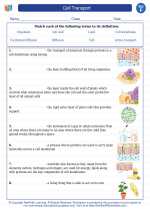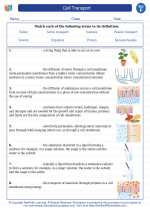Glacial Erosion
Glacial erosion is the process by which glaciers shape and carve the land through the actions of ice, water, and rocks. This type of erosion occurs as glaciers move and flow over the landscape, reshaping the landforms and creating distinctive features such as valleys, fjords, and cirques.
Key Concepts
- Glacial Movement: Glacial erosion occurs as the ice within a glacier moves and flows over the land, carrying rocks and sediment along with it.
- Plucking: This is the process by which glaciers lift and remove rocks from the bedrock as they move, creating deep cavities and smoothing the landscape.
- Abrasion: As glaciers move, the rocks and sediment carried by the ice act like sandpaper, scraping and wearing away the underlying rock, creating grooves and striations.
- Glacial Features: Glacial erosion results in the formation of distinct landforms such as U-shaped valleys, moraines, and aretes, which are characteristic of glaciated regions.
Study Guide
To effectively study glacial erosion, consider the following key points:
- Understand the processes of plucking and abrasion, and how they contribute to glacial erosion.
- Identify and describe the main features created by glacial erosion, such as cirques, horns, and hanging valleys.
- Examine the impact of glacial erosion on the surrounding landscape, including the formation of fjords and moraines.
- Explore the differences between glacial erosion and other forms of erosion, such as water and wind erosion.
- Consider the environmental and geological significance of glacial erosion, including its role in shaping the Earth's surface and influencing local ecosystems.
By understanding the mechanisms and effects of glacial erosion, you can gain a deeper appreciation for the powerful forces that have shaped the Earth's landscapes over time.
.◂Science Worksheets and Study Guides Sixth Grade. Cell Transport
Worksheet/Answer key Cell Transport
Cell Transport  Worksheet/Answer key
Worksheet/Answer key Cell Transport
Cell Transport  Vocabulary/Answer key
Vocabulary/Answer key Cell Transport
Cell Transport  Vocabulary/Answer key
Vocabulary/Answer key Cell Transport
Cell Transport 

 Worksheet/Answer key
Worksheet/Answer key
 Vocabulary/Answer key
Vocabulary/Answer key
 Vocabulary/Answer key
Vocabulary/Answer key

The resources above cover the following skills:
Reading Standards for Literacy in Science and Technical Subjects
Craft and Structure
Determine the meaning of symbols, key terms, and other domain-specific words and phrases as they are used in a specific scientific or technical context relevant to grades 6-8 texts and topics.